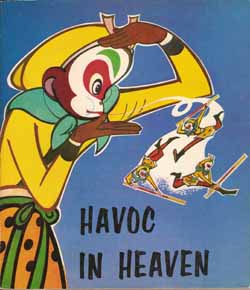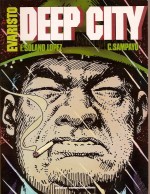
By F. Solano Lopez & Carlos Sampayo (Catalan Communications)
ISBN: 978-0874160345
For British and Commonwealth comics readers of a certain age, the unmistakable artistic style of Francisco Solano Lopez always conjures up dark moods and atmospheric tension because he drew such ubiquitous boyhood classics as Janus Stark, Adam Eterno, Tri-Man, Galaxus: The Thing from Outer Space, Pete’s Pocket Army, Nipper, The Drowned World, Kelly’s Eye, Raven on the Wing, Master of the Marsh and a host of other stunning tales of mystery, imagination and adventure in the years he worked for Britain’s Fleetway Publications.
However the master of blackest brushwork was not merely a creator of children’s fiction. In his home country of Argentina he was considered a radical political cartoonist whose work eventually forced him to flee to more hospitable climes.
Francisco Solano López was born on October 26th 1928 in Buenos Aires and began illustrating comics in 1953 with Perico y Guillerma for the publisher Columba. With journalist Héctor Germán Oesterheld (a prolific comics scripter “disappeared†by the Junta in 1976 and presumed killed the following year) Solano López produced Bull Rocket for Editorial Abril’s magazine Misterix.
After working on such landmark series as Pablo Maran, Uma-Uma, Rolo el marciano adoptivo and El Héroe, López joined Oesterheld’s publishing house Editorial Frontera and became a member of the influential Venice Group which included including Mario Faustinelli, Hugo Pratt, Ivo Pavone and Dino Battaglia.
López alternated with Pratt, Jorge Moliterni and José Muñoz on Oesterheld’s legendary Ernie Pike serial but their most significant collaboration was the explosively political and hugely popular allegorical science fiction thriller El Eternauta which began in 1957. By 1959 the series had come to the unwelcome attention of the authorities in Argentina and Chile, forcing López to flee to Spain. Whilst an exile there he began working for UK publishing giant Fleetway from Madrid and London.
In 1968 he returned to Argentina and with Oesterheld started El Eternauta II for new publisher Editorial Records, produced sci-fi series Slot-Barr (written by Ricardo Barreiro) and period cop drama Evaristo with kindred spirit Carlos Sampayo. In the mid-1970s López was once again compelled to flee his homeland, returning to Madrid where he organised the publication of El Eternauta and Slot-Barr with Italian magazines LancioStory & Skorpio.
He never stopped working, producing a stunning variety of assorted genre tales and mature-reader material and erotica such as El Instituto (printed by Eros as Young Witches), El ProstÃbulo del Terror (story by Barreiro) and Sexy Symphonies: the bleak thrillers Ana and Historias Tristes with his son Gabriel, illustrated Jim Woodring’s adaptation of the cult movie Freaks. In recent times, safely home in Argentina he continued to work on El Eternauta with new writer Pablo “Pol†Maiztegui.
López even found time for more British comics with strips such as ‘Jimmy’, ‘The Louts of Liberty Hall’, ‘Ozzie the Loan Arranger’ and ‘Dark Angels’ in Roy of the Rovers, Hot-Shot and Eagle.
Francisco Solano López passed away in Buenos Aires on August 12th 2011.
Poet, critic and author Carlos Sampayo is most well-known for his grimly powerful comics collaborations with José Muñoz on Joe’s Bar and Alack Sinner (both long overdue for a review here) as well as other contemporary classics like ‘Jeu de Lumières’, ‘Sophie’, ‘Billie Holiday’ and ‘Sudor Sudaca’.
Born in 1943 Sampayo was another outspoken creative Argentinean forced to flee the Junta in the early 1970s. Travelling to Europe he found a home for his desolate, gritty and passionately evocative stories in France and Italy, working with Julio Schiaffino, Jorge Zentner and Oscar Zarate before settling in Spain where he and fellow expatriate Solano López produced the compelling anti-hero Evaristo in 1985.
The long-running serial featured a seemingly brutish ex-boxer who had risen to the rank of Police Commissioner in late 1950s Buenos Aires – a debased and corrupt city of wealth and prestige cheek-by-jowl with appalling poverty and desperate degradation, and after a compelling introduction by Xavier Coma the graphic odyssey begins with ‘Breaking the Ties’ as a bank hostage crisis devolves into a long-postponed grudge match as Commissioner Evaristo is confronted by old Boxing ring-rival Fournier who has returned to finally settle an old score. As is so often the case in such long-lived hatreds, there’s a woman at the heart of it…
‘The Famous Lubitsch Case’ finds the grizzled morally ambivalent veteran pushed by his bosses to locate a missing heiress who has either been abducted or eloped with a notorious gangster and womaniser. Unfortunately, for reasons even he can’t fathom, Evaristo seems determined to discover the truth rather than follow the “clues†his bosses have directed him to find…
In ‘The Herman Operation’ secretive guys with German accents and connections to the Argentinean military keep disappearing and the Commissioner is no use at all. It’s like he isn’t even trying…
The hunt for a cop-killing bandit takes a long look at the Commissioner’s sordid past and some dubious child-care practises by the local clergy in ‘The Crazy Grandson’ whilst ‘Shanty Town’ sees the cops looking for a serial killer whilst a corrupt minister causes a devastating water-shortage – and riots – in the slums. As usual Evaristo ignores his bosses and keeps looking for the “wrong†people…
As a hit-squad tasked with assassinating the troublesome cop uses what seems to be perfect leverage by kidnapping a kid claiming to be his son, Evaristo seems more concerned with an escaped lion causing ‘Terror in the Streets’ and this superb noir mini-masterpiece concludes with ‘Legend of a Wounded Gunman’ as a case from the Commissioner’s early days eerily replays itself – but this time the ending will be different…
Released in America as Deep City this first oversized (277 x 206mm), 112 page monochrome collection depicts the compelling solutions found by a cop who bends all the rules just to win a modicum of justice in an utterly corrupt society: a powerfully cynical and shockingly effective series of vignettes examining freedom and equality in a totally repressive time and place devoid of hope. However at no time does the ideology overwhelm the artistry of the narrative or distract from the sheer power of the art.
This magnificent book and all the other Evaristo tales are long overdue for another shot at the big time…
© 1986 F. Solano López, Carlos Sampayo & Xavier Coma. English language edition © 1986 Catalan Communications. All rights reserved.

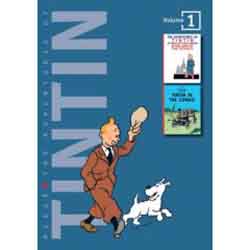
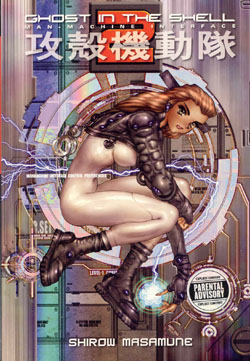
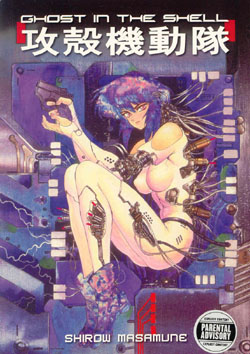
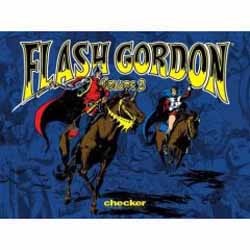 Â
 